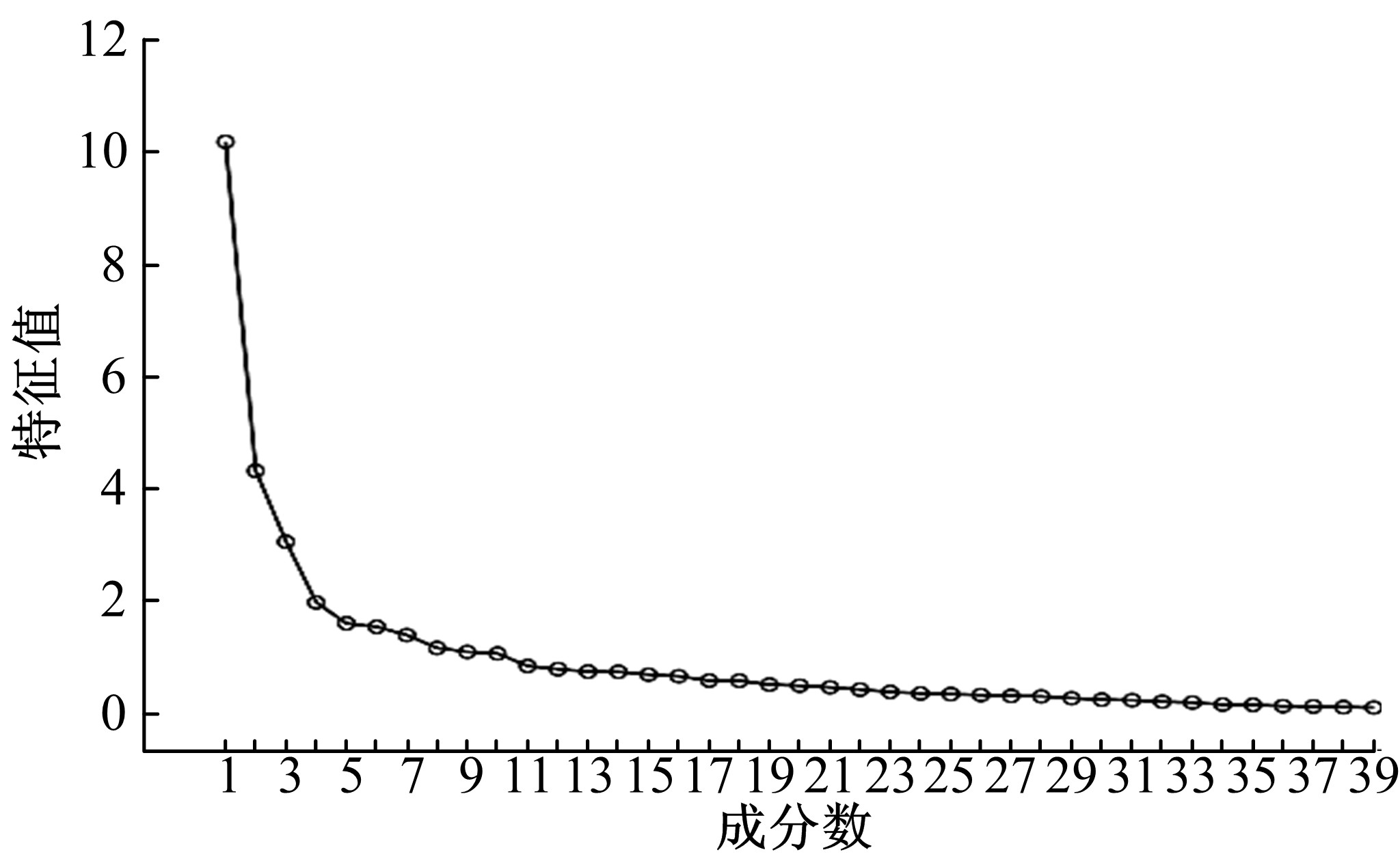Journal of Jilin University(Engineering and Technology Edition) ›› 2019, Vol. 49 ›› Issue (4): 1107-1113.doi: 10.13229/j.cnki.jdxbgxb20180189
Risky driving behavior and influencing factors analysis for electric two⁃wheeler
- 1. Intelligent Transportation Systems Research Center, Wuhan University of Technology, Wuhan 430063, China
2. Engineering Research Center for Transportation Safety, Ministry of Education, Wuhan University of Technology, Wuhan 430063, China
CLC Number:
- U121
| 1 | 全球电动车网. 2016年电动三轮产业发展大数据[EB/OL]. [2017⁃02⁃13]. http:∥. |
| 2 | YuS, YangZ, YuB. Air express network design based on express path choices–Chinese case study[J]. Journal of Air Transport Management, 2017, 61: 73⁃80. |
| 3 | 高继东, 曾必强, 彭伟. 电动自行车与轿车碰撞中骑车人的伤害特征[J]. 吉林大学学报: 工学版, 2016, 46(6): 1786⁃1791. |
| GaoJi⁃dong, ZengBi⁃qiang, PengWei. Cyclist injury in collision between car and electric bicycle[J]. Journal of Jilin University(Engineering and Technology Edition), 2016, 46(6): 1786⁃1791. | |
| 4 | 刘东, 韩凤春, 陈永胜. 灯控路口非机动车交通流运行特性研究[J]. 中国人民公安大学学报: 自然科学版 2004, 10(2): 89⁃92. |
| LiuDong, HanFeng⁃chun, ChenYong⁃sheng. Study on traffic flow characteristics of non⁃motorized vehicle at light control intersection[J]. Journal of Chinese People’s Public Security University(Science and Technology), 2004, 10(2): 89⁃92. | |
| 5 | XuJ, ChenL, WangD, et al. The backbone transportation network optimization problem of air express based on scale economies[J]. Advances in Transportation Studies, 2016, 3:61⁃74. |
| 6 | WaltonD, BuchananJ. Motorcycle and scooter speeds approaching urban intersections[J]. Accident Analysis and Prevention, 2012, 48: 335⁃340. |
| 7 | 北京青年报. 去年北京电动二轮车共发生交通事故31404起[EB/OL]. [2016⁃04⁃05]. http:∥news.sohu.com/20160405/n443301797.shtml. |
| 8 | 重庆日报. 重庆电动两轮车使用管理的调查该当如何管住?[EB/OL]. [2017⁃06⁃30]. http:∥cq.qq.com/a/20170630/015918. |
| htm. | |
| 9 | ReasonJ, MansteadA, StranlingS, et al. Errors and violations on the roads: a real distinction?[J]. Ergonomics, 1990, 33(10/11): 1315⁃1332. |
| 10 | AbergL, RimmoP A. Dimensions of aberrant driver behavior[J]. Ergonomics, 1998, 41(1): 39⁃56. |
| 11 | XieCheng⁃qiu, ParkerD. A social psychological approach to driving violations in two Chinese cities[J]. Transportation Research Part F: Psychology and Behaviour, 2002, 5(4): 293⁃308. |
| 12 | 白云,石京. 北京市驾驶行为与影响因素分析[J]. 交通信息与安全, 2010, 28(2): 114⁃119. |
| BaiYun, ShiJing. Driving behavior and influential factors study in Beijing[J]. Journal of Transportation Information and Safety, 2010, 28(2): 114⁃119. | |
| 13 | 刘霞. 驾驶人驾龄与交通事故相关性研究[D]. 西安:长安大学汽车学院, 2016. |
| LiuXia. Study on correlation between driving experience and traffic accidents[D]. Xi’an: School of Automobile, Chang'an University, 2016. | |
| 14 | TsengC M. Social⁃demographics, driving experience and yearly driving distance in relation to a tour bus driver's at⁃fault accident risk[J]. Tourism Management, 2012, 33(4): 910⁃915. |
| 15 | NohK H, RahC K, YoonY S, et al. Experimental approach to developing human driver models considering driver’s human factors[J]. International Journal of Automotive Technology, 2014, 15(4): 655⁃666. |
| 16 | LiXiao⁃ping, XieLi⁃juan, XuLan. Research on classification and restruction of express service quality elements based on Kano model[C]∥The 13th International Conference on Service Systems and Service Management (ICSSSM), Kunming, China,2016: 1⁃6. |
| 17 | MuhammadAlam,JoaquimFerreira,JoséFonseca. Intelligent Transportation Systems: Dependable Vehicular Communications for Improved Road Safety[M]. Berlin: Springer, 2016. |
| [1] | Zhi⁃hui LI,Tao ZHONG,Yong⁃hua ZHAO,Yong⁃li HU,Hai⁃tao LI,Jing⁃wei ZHAO. Pedestrian tracking algorithm for autonomous driving [J]. Journal of Jilin University(Engineering and Technology Edition), 2019, 49(3): 680-687. |
| [2] | Xiao⁃qin LUO,Dian⁃hai WANG,Sheng JIN. Traffic signal actuated control at isolated intersections for heterogeneous traffic [J]. Journal of Jilin University(Engineering and Technology Edition), 2019, 49(3): 695-704. |
| [3] | QU Da-yi,YANG Jing-ru,BING Qi-chun,WANG Wu-lin,ZHOU Jing-chun. Arterial traffic offset optimization based on queue characteristics at adjacent intersections [J]. Journal of Jilin University(Engineering and Technology Edition), 2018, 48(6): 1685-1693. |
| [4] | LI Zhi-hui, HU Yong-li, ZHAO Yong-hua, MA Jia-lei, LI Hai-tao, ZHONG Tao, YANG Shao-hui. Locating moving pedestrian from running vehicle [J]. 吉林大学学报(工学版), 2018, 48(3): 694-703. |
| [5] | SHAO Sai, BI Jun, GUAN Wei. Electric vehicle routing problem with charging and dynamic customer demands [J]. 吉林大学学报(工学版), 2017, 47(6): 1688-1695. |
| [6] | SUN Zong-yuan, FANG Shou-en. Hierarchical clustering algorithm of moving vehicle trajectories in entrances and exits freeway [J]. 吉林大学学报(工学版), 2017, 47(6): 1696-1702. |
| [7] | ZHANG Zhe, JIA Li-min, QIN Yong, YUN Ting. Equalization-based feedback control model of pedestrian counter flow [J]. 吉林大学学报(工学版), 2017, 47(6): 1728-1737. |
| [8] | LI Zhi-hui, WANG Kun-wei, SONG Xian-min, LIU Xin-shan, SHEN Yao, LUO Rui-qi. Roundabout travel time prediction based on characteristics of lane choosing [J]. 吉林大学学报(工学版), 2017, 47(5): 1411-1419. |
| [9] | LI Xian-sheng, MENG Fan-song, ZHENG Xuan-lian, REN Yuan-yuan, YAN Jia-hui. Driver's visual characteristics based on stress response [J]. 吉林大学学报(工学版), 2017, 47(5): 1403-1410. |
| [10] | LI Ye, WANG Wei, XING Lu, WANG Hao, DONG Chang-yin. Improving traffic efficiency of highway by integration of adaptive cruise control and variable speed limit control [J]. 吉林大学学报(工学版), 2017, 47(5): 1420-1425. |
| [11] | WAN Ping, WU Chao-zhong, LIN Ying-zi, MA Xiao-feng. Driving anger detection based on multivariate time series features of driving behavior [J]. 吉林大学学报(工学版), 2017, 47(5): 1426-1435. |
| [12] | JIANG Pan, YANG Jia-qi, FANG Rui-wei. Bi-level programming model for optimization of urban agglomeration comprehensive transportation corridor layout [J]. 吉林大学学报(工学版), 2017, 47(4): 1061-1067. |
| [13] | WANG Lei, LIU Zhao, LIU Yang. Shift quality evaluation based on human response spectrum analysis [J]. 吉林大学学报(工学版), 2017, 47(3): 725-730. |
| [14] | ZHAO Xue-yu, YANG Jia-qi, PENG Ya-mei. Competitive and cooperative relationship evolution mechanism between urban rail transit and traditional bus [J]. 吉林大学学报(工学版), 2017, 47(3): 756-764. |
| [15] | WANG Hai-wei, WEN Hui-ying, LIU Min. Experimental evaluation of nighttime driver's physiological characteristics in driving simulator [J]. 吉林大学学报(工学版), 2017, 47(2): 420-428. |
|
||


